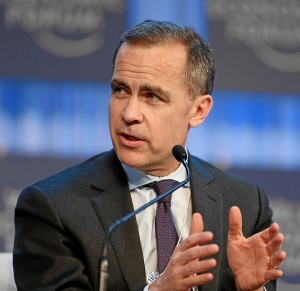 Last week saw the introduction of ‘forward guidance’ by the Bank of England’s governor, Mark Carney. Charles Goodhart evaluates the new policy, arguing that markets are signalling their belief in the success of current stimulatory measures in helping to bring about an economic recovery with legs.
Last week saw the introduction of ‘forward guidance’ by the Bank of England’s governor, Mark Carney. Charles Goodhart evaluates the new policy, arguing that markets are signalling their belief in the success of current stimulatory measures in helping to bring about an economic recovery with legs.
Output in the UK is still below its previous 2007 peak, one of the most anaemic recoveries on record. Despite a sizeable depreciation of sterling in 2007/08, export growth has been seriously disappointing, and its current account deficit remains large. Either despite, or partly because of, its austerity programs, the public sector deficit in the UK remains one of the largest in Europe. In this context several of the foreign exchange forecasts that I follow have been advocating selling £ against $, or shorting ‘cable’ as the cognoscenti put it.
In this context you might have expected Carney’s unveiling of forward guidance (that UK policy interest rates would be held down, subject to conditionality on inflation, etc., until unemployment came down to 7%, an outcome not expected to occur until past the end of the forecast period, i.e. end 2016), to have generated a sharpish further decline in sterling on the forward exchange market. And so it did, by about 90 basis points, for all of ten minutes. But then sterling reversed course and appreciated from about $1.53 to over $1.55. Meanwhile longer gilt yields, far from falling in response to a pledge of lower short-rates for longer, rose a little.

What is going on? Why do the financial markets appear to be looking Carney’s gift horse in the teeth? Denizens of financial markets are, of course, a fairly cynical breed. They have to be. If they believed and acted upon every promise emanating from Whitehall and Threadneedle Street, they would soon find themselves in Carey Street, i.e. bankrupt. Deeds speak louder than works; and the conditionality of the forward guidance left plenty of wriggle-room for the MPC to change tack, if it so wanted, if not in the next few months, at least in the foreseeable future. In any case, there was nothing really now for them in the explicit forward guidance. It had been pretty clear, from previous Inflation Reports, MPC speeches, etc., to them, i.e. to financial market analysts and commentators, that the MPC would aim to hold policy rates to their existing, historically unprecedentedly, low levels for as long as they reasonably could.
But Carney’s forward guidance was never aimed at financial experts, who could already read the plentiful tea-leaves. It was aimed instead at ordinary folk, on the Clapham omnibus. The idea was to reassure them that interest rates on borrowing, especially on mortgages, would not be going up any time soon. But such reassurance was not just meant to give potential debtors a nice warm glow, (and to pressurise the old into working longer, since they could not afford to retire) but rather to entice them to borrow and spend more.
If forward guidance is successful in this fundamental aim, then the British economy will grow faster, than previously expected. And the Inflation Report, issued jointly with the forward guidance, revised its growth forecasts up, amidst a whole slew of upwards (favourable) surprises on indicators of demand. If growth in the UK becomes stronger, then the date at which it will seem right to start interest rates back up on the road to normality comes closer, rather than further away. Memories fade at a pretty horrifically fast pace. Moreover, with all the conditionality, there will be little to stop the MPC raising rates when this comes to seem the right thing to do.
If the British economy strengthens enough, and fast enough, to seem to require raising interest rates here, faster and further than in the euro-zone for example, then sterling can be expected to strengthen. Seen in this light the reaction of markets to the issue of forward guidance could be seen as, somewhat cynical, support for the view that such open mouth operations will indeed lead to more borrowing and spending, as intended.
But let us assume that the variety of, mainly monetary, stimuli does lead nominal incomes, employment, and house prices to rise faster (anyone for rockets?), quicker, to a point where official interest rates need to go up, perhaps well before the end of 2016, will that not damage the Bank’s credibility? Absolutely not. It will be taken as a sign of macro-economic success. So, the curious response of financial markets to forward guidance about how long official rates can be expected to remain ultra-low is not an indication of disbelief. Instead the markets are signalling their belief in the success of current stimulatory measures in helping to bring about an economic recovery with legs.
This article was originally published on our sister blog, British Politics and Policy at LSE
Please read our comments policy before commenting.
Note: This article gives the views of the author, and not the position of EUROPP – European Politics and Policy, nor of the London School of Economics.
Shortened URL for this post: http://bit.ly/144TgEi
_________________________________
 Charles Goodhart – LSE Financial Markets Group
Charles Goodhart – LSE Financial Markets Group
Charles Albert Eric Goodhart, CBE, FBA is a Senior Economic Consultant for Morgan Stanley. He was a member of the Bank of England’s Monetary Policy Committee from June 1997-May 2000 and a professor at the London School of Economics (1985–2002, Emeritus Professor since 2002).


